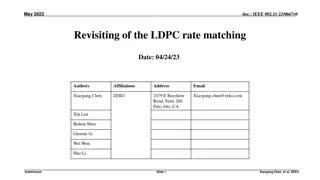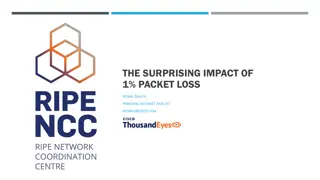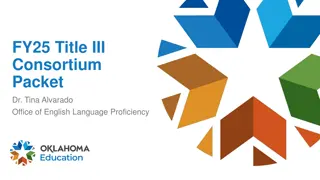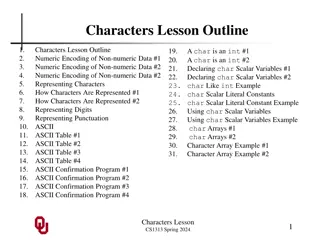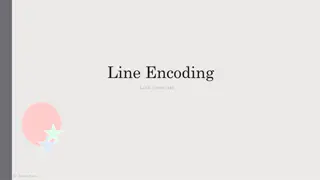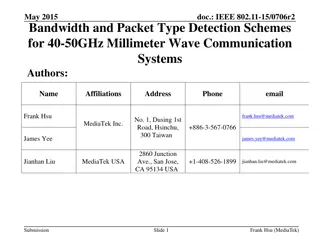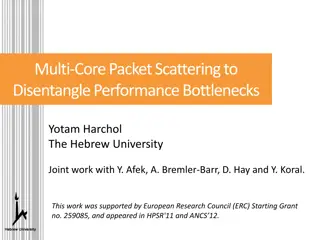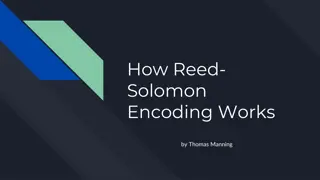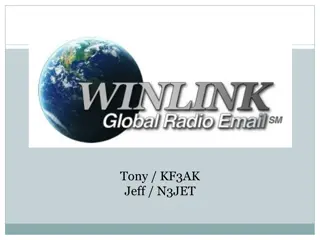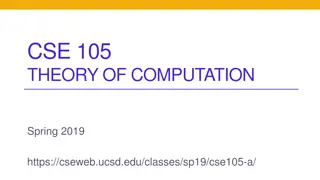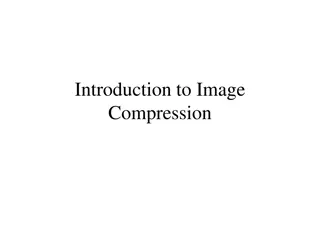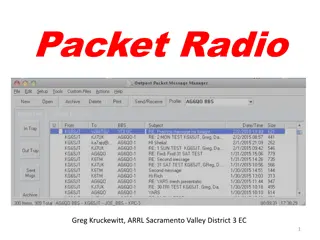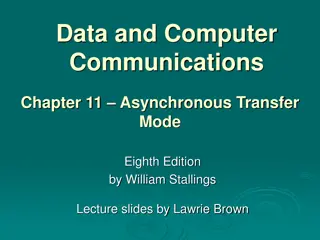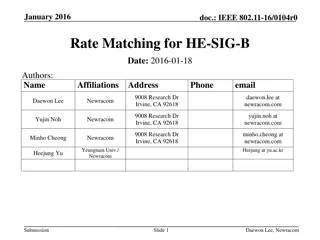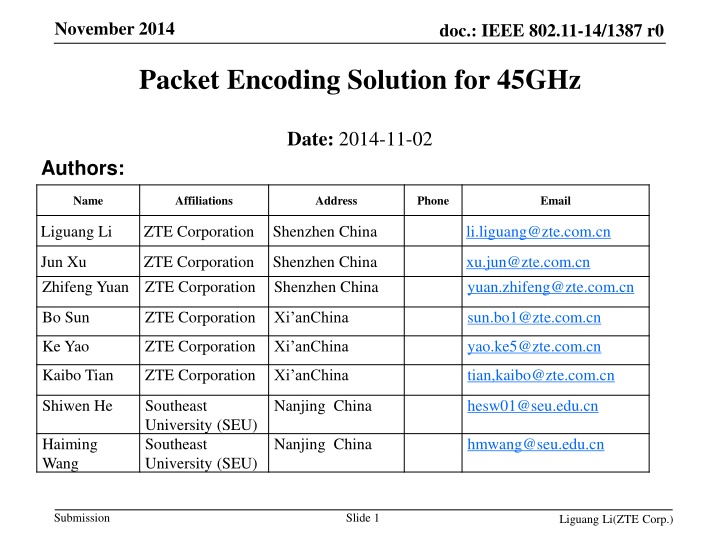
IEEE 802.11-14/1387.r0 Packet Encoding Solution for 45GHz
Explore the proposed packet encoding solution detailed in the November 2014 document for IEEE 802.11-14/1387.r0. The solution addresses traditional packet processing challenges, enhancing reliability for ultra-high-speed data and video transmission in 802.11aj through a strategic encoding procedure including code block segmentation, CRC addition, LDPC encoding, bit selection, and more.
Download Presentation

Please find below an Image/Link to download the presentation.
The content on the website is provided AS IS for your information and personal use only. It may not be sold, licensed, or shared on other websites without obtaining consent from the author. If you encounter any issues during the download, it is possible that the publisher has removed the file from their server.
You are allowed to download the files provided on this website for personal or commercial use, subject to the condition that they are used lawfully. All files are the property of their respective owners.
The content on the website is provided AS IS for your information and personal use only. It may not be sold, licensed, or shared on other websites without obtaining consent from the author.
E N D
Presentation Transcript
November 2014 doc.: IEEE 802.11-14/1387 r0 Packet Encoding Solution for 45GHz Date: 2014-11-02 Authors: Name Affiliations Address Phone Email Liguang Li ZTE Corporation Shenzhen China li.liguang@zte.com.cn Jun Xu Zhifeng Yuan ZTE Corporation ZTE Corporation Shenzhen China Shenzhen China xu.jun@zte.com.cn yuan.zhifeng@zte.com.cn Bo Sun ZTE Corporation sun.bo1@zte.com.cn Xi anChina Ke Yao ZTE Corporation yao.ke5@zte.com.cn Xi anChina Kaibo Tian ZTE Corporation tian,kaibo@zte.com.cn Xi anChina Shiwen He Southeast University (SEU) Southeast University (SEU) Nanjing China hesw01@seu.edu.cn Haiming Wang Nanjing China hmwang@seu.edu.cn Submission Slide 1 Liguang Li(ZTE Corp.)
November 2014 doc.: IEEE 802.11-14/1387 r0 Background: Traditional Packet Traditional data packet processing: Code Block Segmentation -> FEC Encoding -> Data Y (transmit). Source Data Code Block Segmentation 0 1 a-2 a-1 0 1 a-2 a-1 FEC C0 C1 Ca-2 Ca-1 Data Y FEC Parity Bits Submission Slide 2 Liguang Li(ZTE Corp.)
November 2014 doc.: IEEE 802.11-14/1387 r0 Background: Traditional Packet The longer a data packet is, the worse PER it will get The PER(Packet Error Rate) of traditional data packet: PER=1-(1-BCER)^a a BCER, where a is the number of FEC code blocks, BCER denotes Block Code Error Rate of FEC 10 PER~=a * BCER, a=20 0 PER BCER -1 10 PER/BCER -2 10 -3 10 -4 10 4.8 5 5.2 5.4 5.6 SNRdB(Es/N0) A simple and effective solution is necessary to improve reliability of data packet in 802.11aj. 802.11aj is used for ultra high speed data and video transmission. Therefore, wide range of data octets of the PSDU will cause quite a lot of FEC code blocks. Slide 3 Submission Liguang Li(ZTE Corp.)
November 2014 doc.: IEEE 802.11-14/1387 r0 Proposed: Packet Encoding Solution Procedure: Code block segmentation -> Adding CRC -> LDPC Encoding -> Encoding -> Bits Selection -> Data Y (transmit). Packet Source Data Code Block Segmentation 0 1 a-2 a-1 Adding CRC 0 1 a-2 a-1 0 1 a-2 a-1 LDPC Encoding Packet Encoding C0 C1 Ca-2 Ca-1 Packet Encoding C0 C1 Ca-2 Ca-1 Ca Bits Selection The number of bits are the same. Data Y CRC Parity bits of LDPC Parity packet No selecting bits Submission Slide 4 Liguang Li(ZTE Corp.)
November 2014 doc.: IEEE 802.11-14/1387 r0 Details of the Proposed Solution Encoding Process: Adding CRC: Divide the source data into a groups of k bits, where k=328 for code rate 1/2, k=412 for code rate 5/8, k=496 for code rate 3/4, k=538 for code rate 13/16. Adding 8 bits CRC sequence to each group. Then all groups are encoded to create LDPC code blocks (C0,C1,C2, , Ca-1) with length of 672 bits. = Packet Encoding: parity packet is created by: , where the symbol is XOR. The length of parity packet is 672 bits. C C C C C a 0 1 1 a a C a Submission Slide 5 Liguang Li(ZTE Corp.)
November 2014 doc.: IEEE 802.11-14/1387 r0 Details of the Proposed Solution Encoding Process: Bits Selection: the punctured bits number (ei, i=0 1 a-1) of a LDPC code blocks are set by: 1 if 1<a<=15: 2 if a>15: /( 1) 1 ei n a i = + + = /( 1) ei n a i g g = + = /( 1) ( g n n a a = + + = = 42 0,1, , 1 ei i a 0,1, + 1) , 1 g , , 1, 1 a Where, 3 if a==1: e0=0 The punctured bits number (ei,i=a) of parity packet is set by: Where, n is the size of LDPC code and n=672. 1 a = ea n ei = 0 i Submission Slide 6 Liguang Li(ZTE Corp.)
November 2014 doc.: IEEE 802.11-14/1387 r0 Details of the Proposed Solution Encoding Process: Data Y is generated by: = 0,1, , for i a = n ei 0,1, ,( 1) for m 1 i ( )) if m ek = 0 k = Y C , , i m i m else = Y C + , , i m i m ei end if end for m end for i ( ) ( ) Submission Slide 7 Liguang Li(ZTE Corp.)
November 2014 doc.: IEEE 802.11-14/1387 r0 Proposed: Packet Encoding Solution Examples: 42 bits C0 42 bits C1 42 bits 1. 10 LDPC code blocks C2 42 bits C8 42 bits C9 Packet Encoding 252 C10 Punctured bits Selected bits 7 bits C0 7 bits C1 7 bits 2. 100 LDPC code blocks C65 6 bits C66 6 bits C99 Packet Encoding 6 bits C100 Punctured bits Selected bits Submission Slide 8 Liguang Li(ZTE Corp.)
November 2014 doc.: IEEE 802.11-14/1387 r0 Simulation Simulation parameters: Channel:AWGN. Modulation Mode: QPSK, 16QAM, 64QAM. Code Rate: 1/2, 5/8, 3/4, 13/16. The number of LDPC code blocks in a data packet: 10, 20, 50,100. Performance Comparison: Compensation of 8 CRC bits for traditional packet: k is the information bits length of LDPC code. The value of k is 328 for code rate 1/2, 412 for 5/8, 496 for 3/4 and 538 for 13/16. 10 log (( + 8) ) k k , where 10 Submission Slide 9 Liguang Li(ZTE Corp.)
November 2014 doc.: IEEE 802.11-14/1387 r0 Simulation Performance(QPSK, AWGN): Rate of 13/16, gain(PER=0.1): Rate of 1/2, gain (PER=0.1): 10 LDPC: 0.2dB 50 LDPC: 0.6dB 100 LDPC: 0.8dB 10 LDPC: 0.1dB 50 LDPC: 0.3dB 100 LDPC: 0.3dB Packet Encoding, Rate=1/2 Packet Encoding, Rate=13/16 0 0 10 10 New,Num=10 New,Num=50 New,Num=100 Trad,Num=10 Trad,Num=50 Trad,Num=100 0.3dB 0.2dB 0.1dB -1 10 0.8dB -1 10 PER 0.3dB 0.6dB PER New,Num=10 New,Num=50 New,Num=100 Trad,Num=10 Trad,Num=50 Trad,Num=100 -2 10 -2 10 1.4 1.6 1.8 SNRdB(Es/N0) 2 2.2 2.4 5.5 6 6.5 SNRdB(Es/N0) Submission Slide 10 Liguang Li(ZTE Corp.)
November 2014 doc.: IEEE 802.11-14/1387 r0 Simulation Performance(16QAM, 64QAM, AWGN): 20 LDPC 64QAM gain(PER=0.1): Rate of 5/8: 0.3dB Rate of 3/4: 0.3dB Rate of 13/16: 0.6dB. 20 LDPC, 16QAM gain(PER=0.1): Rate of 1/2: 0.3dB; Rate of 3/4: 0.2dB. Packet Encoding, 64QAM, NUM=20 Packet Encoding, 16QAM, NUM=20 0 0 10 10 New,R=1/2 New,R=3/4 Trad,R=1/2 Trad,R=3/4 0.3dB 0.6dB 0.3dB -1 10 0.2dB 0.3dB PER -1 PER 10 New,R=5/8 New,R=3/4 New,R=13/16 Trad,R=5/8 Trad,R=3/4 Trad,R=13/16 -2 10 -2 -3 10 10 7 8 9 10 11 12 13 14 15 16 17 18 19 SNRdB(Es/N0) SNRdB(Es/N0) Submission Slide 11 Liguang Li(ZTE Corp.)
November 2014 doc.: IEEE 802.11-14/1387 r0 Complexity Analysis Transmitter 1. cumulative XOR module (parallel or serial) for packet encoding. 2. buffer (size of 672 bits) for results of XOR. Bits Code Block Segmentation Adding CRC LDPC Encoding Modulation Selection Packet Encoding Buffer Receiver 1. Buffers for LLR of LDPCs decoded failure and result of cumulative XOR of LDPCs decoded correctly. 2. Decoder of XOR(min-sum, parallel or serial) . Decoding Data LDPC Decoding Demodulation LLR Buffer Packet Decoding LDPC Decoding Conclusion: Low complexity Submission Slide 12 Liguang Li(ZTE Corp.)
November 2014 doc.: IEEE 802.11-14/1387 r0 Effectiveness Analysis Why does it work? According to Information Theory, for any single FEC (Forward Error Correction) code, the longer it is, the better performance it will get. LDPC can not support any code length and the length can not be very long due to complexity. Usually, the large traditional data packet is divided into small FEC code blocks, the PER of the whole data packet can be proximately equal to BCER*a. Where a is the number of FEC code blocks. BCER is a relatively constant value for a certain setting. So the longer of the large data packet is, the worse PER it will get using traditional processing. The proposed solution builds relationship among all the code blocks, so that we will get a gain similar to that of a large data packet using LDPC encoding. Of course the operation we introduced is XOR instead of the complex LDPC, so the gain will not be so large as LDPC. And in order to reach the same rate as traditional data packet processing we puncture some bits which will affect the gain. These effects can hardly be derived algebraically, therefore simulation is an effective way to measure it. Submission Slide 13 Liguang Li(ZTE Corp.)
November 2014 doc.: IEEE 802.11-14/1387 r0 Summary We proposed a packet encoding solution for group discussion. The simulation results show that the packet encoding solution brings a good gain compared to the traditional method with adding low complexity for both transmitter and receiver. Submission Slide 14 Liguang Li(ZTE Corp.)

